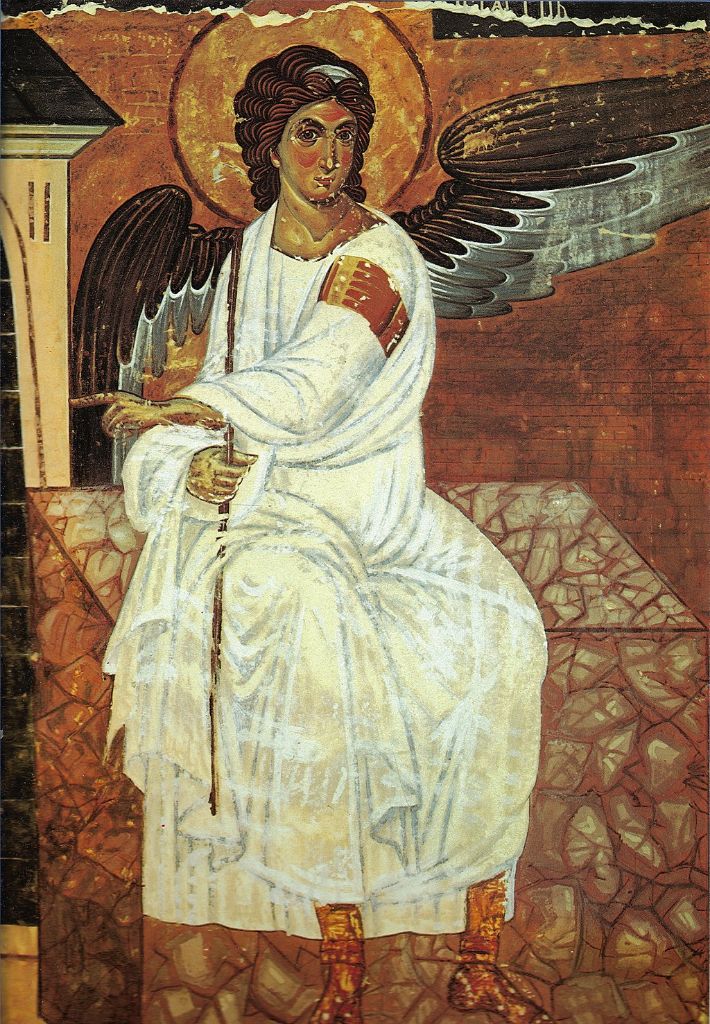A symbol of peace, sent in the first satellite broadcast signal from Europe to America in 1962.
The White Angel is a detail of a 14th-century fresco (Myrrhbearers at Christ’s tomb) located in the Mileševa monastery near Prijepolje in Serbia. It is believed to have been painted c.1235 during the rule of serbian king Stefan Vladislav and is considered a masterpiece of Byzantine art. It depicts an angel with a white robe and a golden halo, holding a scroll with an inscription in Greek. The angel is often interpreted as a symbol of divine wisdom and the fresco is considered an important example of the so-called “Palaiologos renaissance” of Byzantine art in the late medieval period. The fresco is considered a cultural heritage of Serbia and is protected by the state.
| White Angel | 1235 |
| Stefan Vladislav | Mileševa Manastir, Prijepolje, Srbija, Zlatibor |

